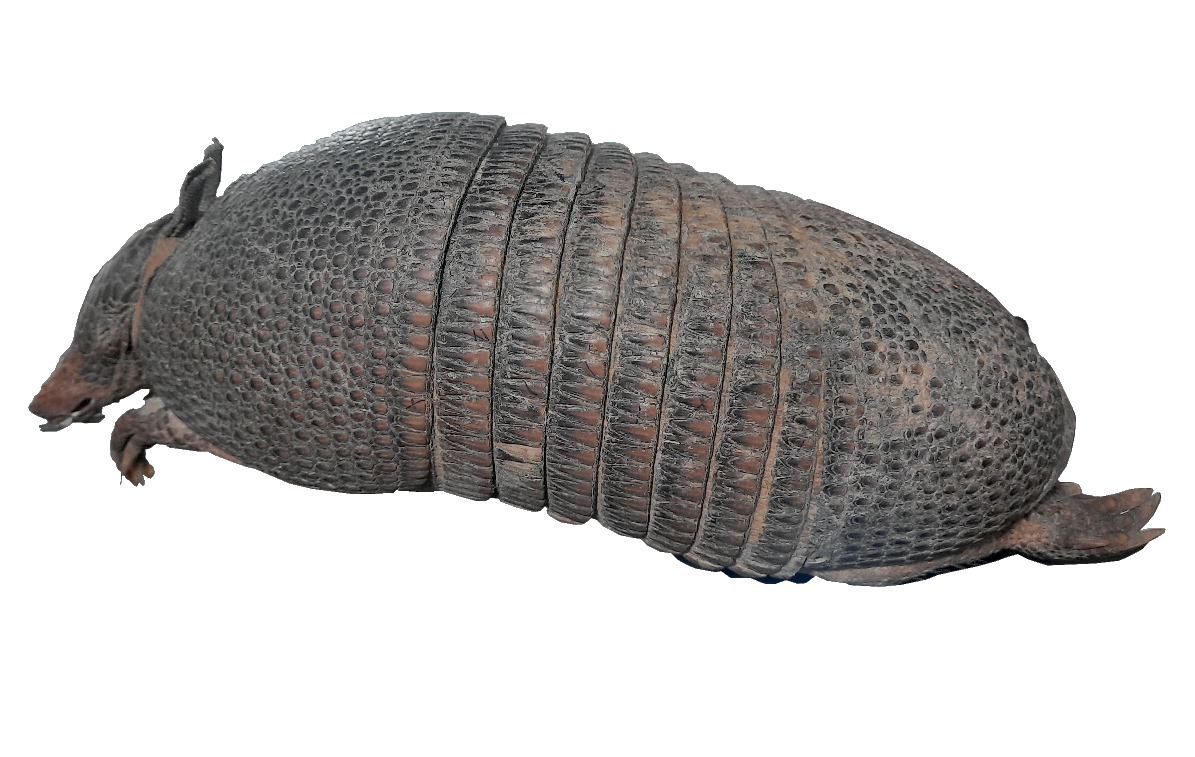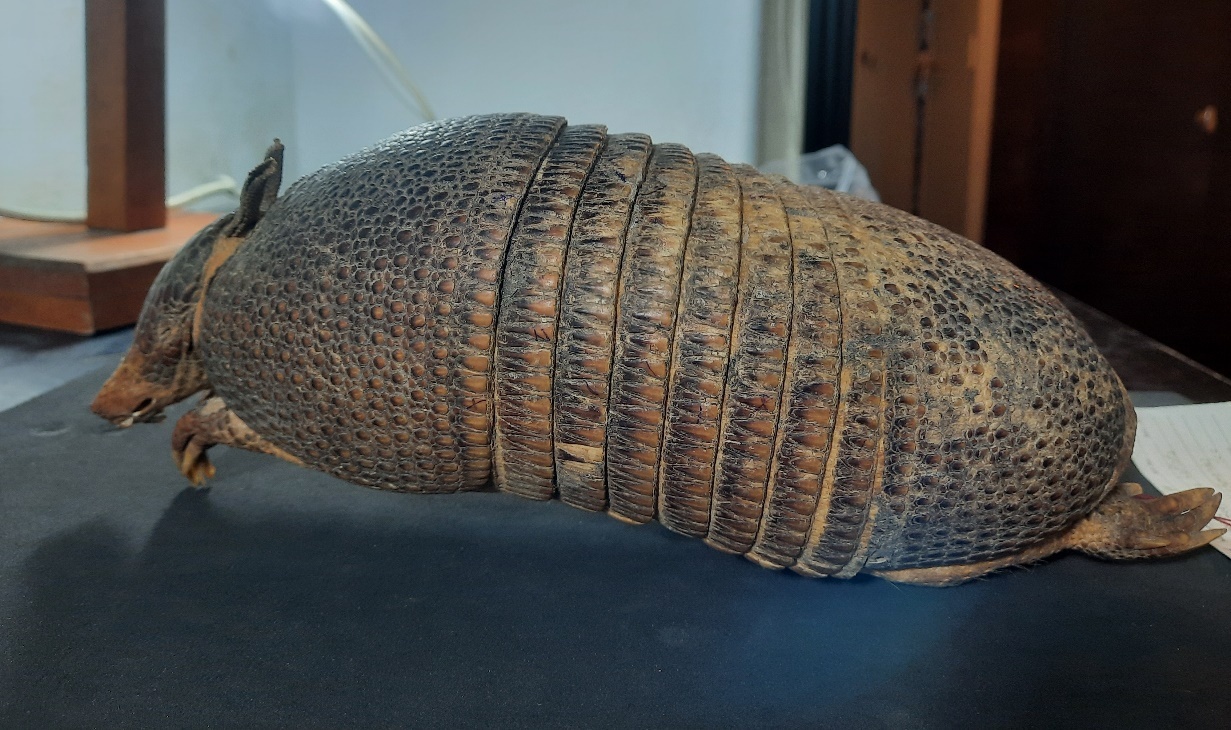An Armadillo of La Plata Museum
Beschreibung
This armadillo belongs to the species DASYPUS HYBRIDUS, popularly known as 'mulita'. It is native to South America and is found in Argentina, Uruguay, Paraguay and Brazil. This dried specimen entered the zoological collections of the La Plata Museum in 1907, along with many others from the embryological research of Miguel Fernández, a scientist at this museum. In 1909, he proved the polyembryony phenomenon in the mulita. This species and the nine-banded armadillo (DASYPUS NOVEMCINCTUS) are today the only mammals known to have “specific polyembryony”: the fertilized ovum always gives rise to twins. By 1900s, this embryological research required a large number of pregnant females in various stage of development and Fernández was able to obtain many in delicatessen stores. At that time, the mulita was a highly priced meal and thousands of them were shipped from the countryside to the Buenos Aires and La Plata markets. Its gastronomic importance made it possible to assemble a large research collection.
Kurzbeschreibung
This armadillo belongs to the species DASYPUS HYBRIDUS, popularly known as 'mulita'. It is native to South America and is found in Argentina, Uruguay, Paraguay and Brazil. This dried specimen entered the zoological collections of the La Plata Museum in 1907, along with many others from the embryological research of Miguel Fernández, a scientist at this museum.
Institution
Typ
Mulita (DASYPUS HYBRIDUS)
Thema
embryological research, polyembryony phenomenon, zoological collections, dietry habits, south america
Beteiligte Personen und Organisationen
Miguel Fernández acquired several of these specimens from a delicatessen store of La Plata, because in this time the mulita was a priced meal. The gastronomic importance of mulita by 1900s made it possible to gather a large research collection.
Zeit
1868
Ort
Buenos Aires province, Argentina
Material/Technik
Dried specimen (carapace and dry skin) - scientific preparation
Identifikator
Inventory number: 16.IX.35.41
Förderung
Project: SciCoMove - Scientific Collections on the Move: Provincial Museums, Archives and Collecting Practices (1800-1950).
Funding: This project has received funding from the European Union’s Horizon 2020 research and innovation programme under the Marie Skłodowska-Curie grant agreement No 101007579.
The contents of this publication are the sole responsibility of the SciCoMove consortium and do not necessarily reflect the opinion of the European Union.
Funding: This project has received funding from the European Union’s Horizon 2020 research and innovation programme under the Marie Skłodowska-Curie grant agreement No 101007579.
The contents of this publication are the sole responsibility of the SciCoMove consortium and do not necessarily reflect the opinion of the European Union.
Dateien


Quellenangabe
„An Armadillo of La Plata Museum,” SciCoMove, zuletzt aufgerufen am 1. Juli 2025, https://ausstellungen.deutsche-digitale-bibliothek.de/scicomove/items/show/6.
